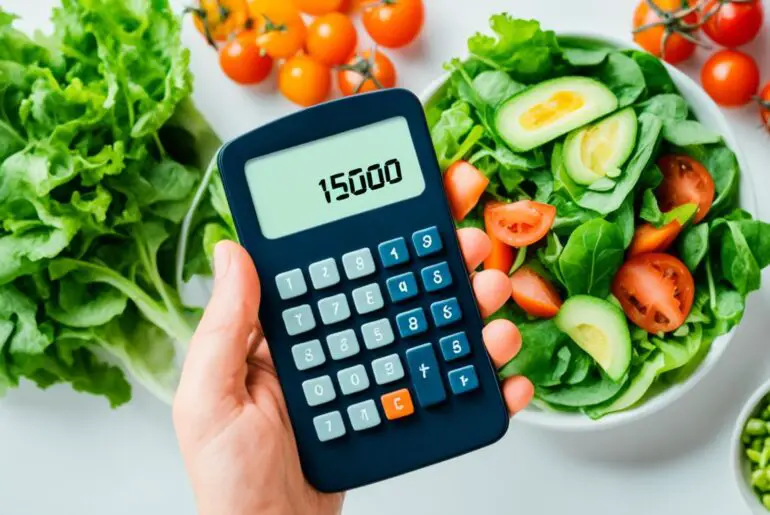Did you know that maintaining weight loss can be even more challenging than losing the weight in the first place? According to research, only about 20% of people who lose weight successfully are able to keep it off long-term.
When it comes to the HCG Diet, the Maintenance Phase is crucial for transitioning into a healthier lifestyle and sustaining your weight loss. This phase consists of 6 weeks, with the first 3 weeks focused on avoiding carbohydrates and gradually reintroducing them in the following weeks.
In this article, I will provide you with the essential guidelines for successfully navigating the HCG Diet Maintenance Phase. From daily weighing to food choices and portion control, these tips will help you maintain your weight loss and embrace a healthier way of living.
Key Takeaways:
- Follow the guidelines for the HCG Diet Maintenance Phase to sustain weight loss and transition to a healthier lifestyle.
- Weigh yourself daily and stay within 2 lbs of your last injection weight for successful maintenance.
- In Phase 3, gradually reintroduce carbohydrates while monitoring your body’s response.
- Focus on protein-rich foods, fruits in moderation, nuts and seeds, and vegetables during the Maintenance Phase.
- Avoid carbohydrates, sugar, and certain condiments to maintain weight loss.
Phase 3 Guidelines for HCG Diet Maintenance
Phase 3 of the HCG Diet Maintenance requires strict adherence to specific guidelines. During the first 3 weeks, carbohydrate restriction is essential, and daily weighing plays a crucial role in weight maintenance. It is important to focus on increasing protein intake and gradually adding calories to train your body to accept higher calorie acceptance levels. Avoiding low-calorie diets during this phase is necessary as they can negatively impact metabolism. Additionally, it’s vital to ensure that condiments and food options are within the recommended guidelines.
To successfully transition into Phase 3 of the HCG Diet Maintenance, it’s important to adhere to the following phase 3 guidelines:
1. Carbohydrate Restriction:
During the first 3 weeks of Phase 3, it is crucial to avoid carbohydrates. This includes starchy foods such as rice, bread, potatoes, and pastries. By limiting carbohydrate intake, your body will be encouraged to burn fat as an energy source, facilitating weight maintenance.
2. Increase Protein Intake:
Protein is an essential macronutrient, especially during the HCG Diet Maintenance Phase 3. Focus on consuming lean sources of protein such as skinless chicken, turkey, fish, and lean cuts of beef. Adequate protein intake helps in building and repairing tissues while supporting muscle maintenance.
3. Gradually Add Calories:
During Phase 3, it is important to gradually increase calorie intake to train your body to accept higher calorie levels. While initially in the first 3 weeks no carbohydrates are allowed, gradually increasing calorie intake will help prevent weight loss complications and promote a healthier transition into long-term weight maintenance.
4. Avoid Low-Calorie Diets:
It is essential to refrain from following low-calorie diets during Phase 3 of the HCG Diet Maintenance. Low-calorie diets can negatively impact your metabolism and may hinder your ability to maintain weight loss. Focus on incorporating a balanced diet that provides adequate nutrients for overall health.
5. Check Condiments and Food Options:
While enjoying food options during HCG Diet Maintenance Phase 3, it is crucial to ensure that condiments and food choices are compliant with the recommended guidelines. Be mindful of sugar and carbohydrate content in condiments and sauces. Opt for low-sugar alternatives or make your own homemade versions to maintain control over the ingredients.
6. Daily Weighing:
Continuing the practice of daily weighing is important during Phase 3 of the HCG Diet Maintenance. It allows you to monitor your weight and ensure that you’re within a healthy range, staying within 2 lbs of your last injection weight. Daily weighing helps detect potential weight gain signs and allows you to make adjustments to your diet or seek support if needed.
| Phase 3 Guidelines | Summary |
|---|---|
| Carbohydrate Restriction | Avoid starchy foods like rice, bread, potatoes, and pastries to encourage fat burning. |
| Increase Protein Intake | Focus on consuming lean sources of protein like chicken, fish, and lean cuts of beef. |
| Gradually Add Calories | Train your body to accept higher calorie levels by incrementally increasing calorie intake. |
| Avoid Low-Calorie Diets | Refrain from following low-calorie diets as they can negatively impact metabolism. |
| Check Condiments and Food Options | Ensure that condiments and food choices align with the recommended guidelines, checking for sugar and carbohydrate content. |
| Daily Weighing | Weigh yourself daily, staying within 2 lbs of your last injection weight to monitor your progress and make necessary adjustments. |
Foods to Include in HCG Diet Maintenance Phase 3
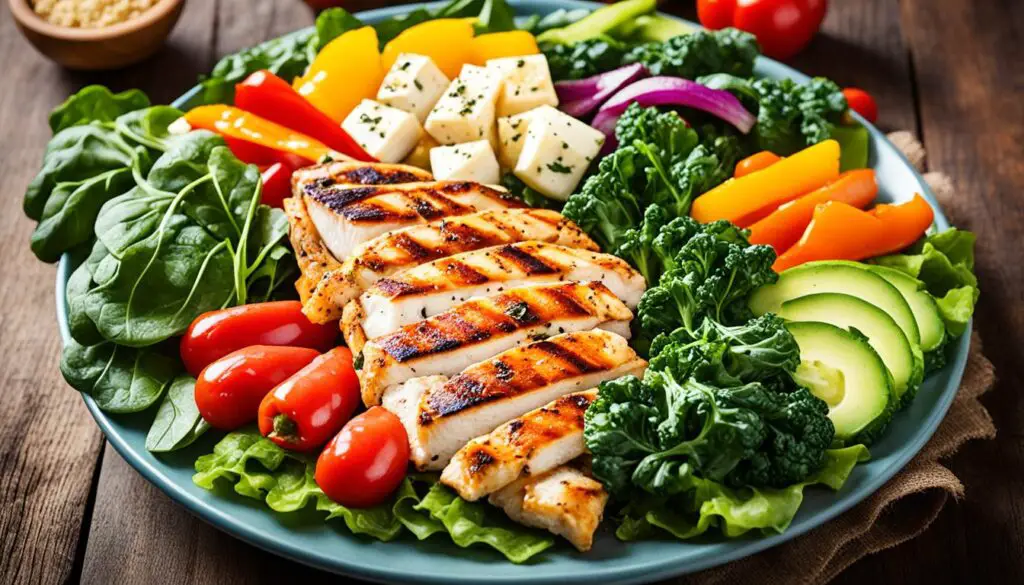
In Phase 3 of the HCG Diet Maintenance, it’s important to focus on a balanced and nutritious diet that supports your weight maintenance goals. Here are some foods that you can include in your diet during this phase:
Protein-rich foods
Include lean meats such as chicken, turkey, and lean cuts of beef in your meals. Fish, like salmon and tuna, are also excellent sources of protein.
Fruits in moderation
Enjoy fruits in moderation, focusing on berries, apples, and other low-sugar options to satisfy your sweet cravings.
Nuts and seeds
Incorporate nuts and seeds into your diet as a healthy snack option. Almonds, walnuts, chia seeds, and flaxseeds are great choices.
Dairy in moderation
Choose dairy products such as plain yogurt and low-fat cheese in moderation. They provide essential nutrients while keeping the calorie and fat intake in check.
Vegetable options
Opt for a variety of vegetables in your meals to ensure you get a range of vitamins and minerals. Leafy greens, broccoli, cauliflower, and bell peppers are nutrient-dense options.
Broth-based soups
Include broth-based soups in your diet as they can be filling and provide nourishment. Use homemade broths and incorporate vegetables and lean proteins for added nutrients.
Fats and oils in moderation
Consume fats and oils in moderation to maintain a healthy balance. Choose sources like olive oil and avocados for their beneficial properties.
Supplementation
Continue taking any recommended supplements during this phase to support your overall health and well-being.
Remember, moderation and balance are key during Phase 3 of the HCG Diet Maintenance. Focus on nutrient-dense foods and listen to your body’s needs to maintain your weight loss successfully.
“`html
| Protein-Rich Foods | Fruits in Moderation | Nuts and Seeds |
|---|---|---|
| Lean meats (chicken, turkey, beef) | Berries (strawberries, blueberries) | Almonds |
| Salmon and tuna | Apples | Walnuts |
| Other low-sugar options | Chia seeds, flaxseeds |
| Dairy in Moderation | Vegetable Options | Broth-Based Soups |
|---|---|---|
| Plain yogurt | Leafy greens | Homemade broths |
| Low-fat cheese | Broccoli, cauliflower | Incorporate vegetables and lean proteins |
| Bell peppers |
| Fats and Oils in Moderation | Supplementation |
|---|---|
| Olive oil | Continue recommended supplements |
| Avocado | |
Foods to Avoid in HCG Diet Maintenance Phase 3
During Phase 3 of the HCG Diet Maintenance, it’s important to be mindful of the foods you should avoid. These foods can hinder your progress and derail your weight loss maintenance goals. By understanding which foods to steer clear of, you can stay on track and maximize your results. Here are some key foods to avoid:
Carbohydrates:
- Rice
- Bread
- Potatoes
- Pastries
- Cereal
- Grissini bread sticks
Sugary Condiments:
Be cautious of condiments that are high in sugar content, as they can easily add unwanted calories to your diet. Avoid sugary condiments such as:
- Jams
- Jellies
By eliminating these foods from your diet during Phase 3, you can maintain the progress you’ve made and continue on your journey towards long-term weight loss maintenance.
Remember, staying true to your diet and avoiding these foods will set you up for success during the HCG Diet Maintenance Phase 3. Stay disciplined, make smart food choices, and enjoy the benefits of your hard work and commitment.
Tips for Successful Weight Maintenance

To successfully maintain weight loss during Phase 3 of the HCG Diet Maintenance, there are several tips to keep in mind. Weighing yourself daily and staying within 2 lbs of your last injection weight is crucial for monitoring your progress and making any necessary adjustments.
One helpful strategy for addressing weight gain is to implement a steak day. If you notice an increase in weight, you can skip breakfast and lunch and consume a large steak with an apple or tomato for dinner. This can help reset your body and get you back on track.
Another important factor for successful weight maintenance is maintaining a high protein intake. Protein is essential for rebuilding and repairing tissues and can help keep you feeling satisfied and full. Include lean meats, poultry, fish, eggs, and plant-based protein sources in your diet.
Be mindful of your carb and sugar limits. It’s important to avoid consuming excessive carbohydrates and sugars, as they can hinder your weight maintenance efforts. Focus on whole, unprocessed foods and limit or avoid foods and beverages high in added sugars, such as soda, candy, and baked goods.
When checking food labels and condiments, make sure they meet the recommended guidelines for carb and sugar content. Some condiments can contain hidden sugars, so it’s crucial to read labels and choose options that align with your goals.
Consider making homemade alternatives for sauces and dressings to have better control over the ingredients and minimize added sugars. There are plenty of healthy and flavorful recipes available that use natural ingredients and can be customized to your preferences.
Continue taking any supplements that were recommended during the HCG Diet Maintenance. Supplements can provide essential nutrients that may be lacking in your diet and support overall health and well-being.
Incorporate regular physical activity into your routine to help maintain your weight loss. Aim for at least 150 minutes of moderate-intensity aerobic activity or 75 minutes of vigorous-intensity aerobic activity each week. Additionally, strength training exercises can help build and maintain muscle mass, which is important for overall metabolism and weight management.
If you have any concerns or need additional support, don’t hesitate to reach out to the office. They can provide guidance, answer your questions, and offer the necessary support to help you navigate the challenges of weight maintenance and healthy living.
| Tips for Successful Weight Maintenance |
|---|
| Weigh yourself daily and stay within 2 lbs of your last injection weight |
| Implement a steak day for weight gain correction |
| Maintain a high protein intake |
| Mind carb and sugar limits |
| Check condiments for carb and sugar content |
| Consider homemade alternatives for sauces and dressings |
| Continue taking recommended supplements |
| Incorporate regular physical activity |
| Contact the office for support |
Phase 1 of HCG Diet Maintenance
Phase 1 of the HCG Diet Maintenance is known as gorging/loading. This is a critical part of the diet and should be done correctly to avoid extreme hunger pains during the first week of the diet. It is important to understand the significance of correct gorging/loading for a successful transition into Phase 2.
During Phase 1, I recommend eating as much fatty and oily foods as possible. This may seem counterintuitive, but it serves an important purpose. By consuming high-fat foods during this phase, your body will build up a reserve of calories that will support you during the early stages of the diet.
Many people experience extreme hunger pains during the first week of the diet, but correct gorging/loading can help minimize them. By adequately preparing your body to enter a low-calorie phase, you can mitigate the discomfort typically associated with reduced food intake. Remember, Phase 1 is not an opportunity to indulge in unhealthy foods but rather a strategic way to set the stage for successful weight loss.
Tips for Successful Gorging/Loading
- Choose the right foods: During Phase 1, focus on consuming high-fat and calorie-dense foods. Opt for options like avocados, nuts, cheese, and oils.
- Maintain portion control: While it is essential to eat more than usual during the gorging/loading phase, be mindful of portion sizes. Overeating excessively can lead to digestive discomfort and counteract the purpose of this phase.
- Stay hydrated: Drink plenty of water during this phase to ensure adequate hydration and support your body’s processes.
- Monitor yourself: Pay attention to your body’s cues and stop eating when you feel comfortably full. Avoid the temptation to overindulge, as it can lead to unnecessary weight gain.
- Prepare mentally: Embrace the concept of gorging/loading as a necessary step towards achieving your weight loss goals. Understand that it is a temporary phase aimed at providing the energy reserves needed for the subsequent low-calorie portion of the diet.
By following these tips and approaching Phase 1 of the HCG Diet Maintenance with the right mindset, you can set yourself up for success in the subsequent phases.
Phase 2 of HCG Diet Maintenance

Phase 2 of the HCG Diet Maintenance, also known as the fat burn phase, lasts for 21 days. During this phase, following a 500 calorie diet and using the Nasal Spray is crucial to achieve optimal results. It’s essential to make informed and strategic food choices, which include specific options for protein, fruits and vegetables, and starch. Vegetarian substitutions are also available to accommodate different dietary preferences. When adding seasonings to your meals, be sure to check for any added sugars to stay within the recommended guidelines. Adhering to the daily food limit and maintaining the recommended food combinations are key to successful weight management during this phase.
The 500 Calorie Diet
The 500 calorie diet is a vital component of Phase 2 of the HCG Diet Maintenance. It is designed to support the body in burning excess fat while maintaining lean muscle mass. This low-calorie intake forces the body to rely on stored fat for energy, leading to weight loss.
The Nasal Spray
The Nasal Spray is another essential aspect of Phase 2. It helps curb hunger cravings and supports the body’s fat-burning processes. Used as directed, the Nasal Spray enhances the effectiveness of the HCG Diet Maintenance Program.
Food Choices
During Phase 2, specific protein options should be prioritized, such as lean meats, poultry, and fish. Fruits and vegetables are also essential, with options like apples, strawberries, asparagus, and spinach contributing to a well-rounded diet. Starch options like Melba toast and grissini breadsticks can be included in moderation to add variety to meals.
Here are some examples of protein, fruit, vegetable, and starch options:
| Protein Options | Fruit Options | Vegetable Options | Starch Options |
|---|---|---|---|
| Chicken breast | Apples | Asparagus | Melba toast |
| Beef tenderloin | Strawberries | Spinach | Grissini breadsticks |
| White fish | Oranges | Cucumbers |
It’s important to note that seasonings can enhance the flavor of your meals, but they should be checked for any added sugars or other prohibited ingredients. As always, adherence to the daily food limit and consistent monitoring of portion sizes are crucial for successful weight management.
Here is an example of a diet plan for Phase 2:
- Breakfast: Grilled chicken breast with a side of spinach
- Snack: Apple slices with a small portion of low-fat cottage cheese
- Lunch: White fish with steamed asparagus
- Snack: Strawberries
- Dinner: Beef tenderloin with cucumber slices
- Snack: Orange segments
Remember to consult with your healthcare provider or nutritionist for personalized recommendations and modifications based on your specific needs and goals.
Plateau Breakers in HCG Diet Maintenance Phase 2
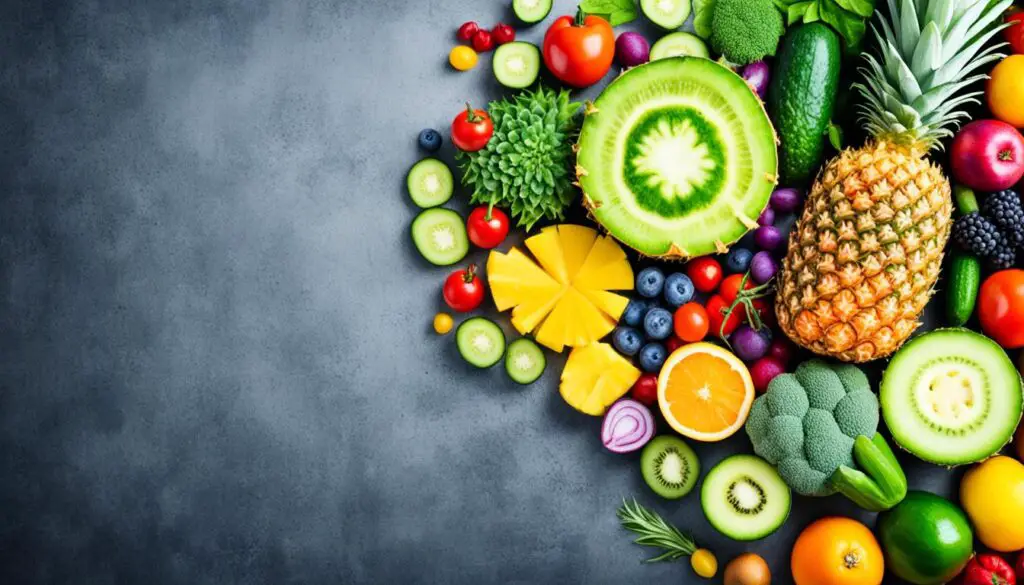
If you experience a weight loss plateau during Phase 2 of the HCG Diet Maintenance, there are several strategies you can implement to overcome it. Incorporating these plateau breakers can help kickstart your progress and continue on your weight loss journey.
1. Increasing Water Intake
Increase your water intake to stay hydrated and promote proper digestion. Aim for at least 8 glasses of water per day to support your body’s natural processes and help break through plateaus.
2. Adjusting Protein Intake
Take a closer look at your protein intake. Ensure that you are consuming enough lean proteins to nourish your body and support muscle growth. Adjusting your protein intake can help break through plateaus by providing your body with the nutrients it needs.
3. Incorporating an Apple Day
An apple day is a technique used to break through plateaus. On this day, you consume only apples and water, avoiding other foods. This method can help reset your metabolism and jumpstart weight loss.
4. Checking Condiments
Inspect the condiments you are using in your meals. Some condiments may contain hidden sugars or additives that can hinder weight loss progress. Choose condiments that are sugar-free and low in calories to support your goals.
5. Eliminating Breadsticks
During Phase 2, breadsticks are allowed in limited quantities. However, if you are experiencing a plateau, consider eliminating breadsticks from your diet temporarily. This can help reduce your carbohydrate intake and encourage weight loss.
6. Checking Protein Sources
Ensure that your protein sources are lean and high-quality. Some protein sources may have hidden sugars or unhealthy fats that can interfere with weight loss. Opt for lean meats, poultry, fish, and plant-based proteins to support your progress.
7. Evaluating Weight Goal
If you have reached your initial weight goal and are still experiencing plateaus, it may be time to reevaluate your goal. Consult with your healthcare provider or weight loss coach to determine if adjusting your weight goal is necessary.
8. Changing Medications
If you are taking any medications that could be impacting your weight loss or contributing to plateaus, consult with your healthcare provider. They may be able to suggest alternative medications or adjust your current dosage to support your weight loss journey.
9. Adjusting Food Intake
Take a closer look at your overall food intake. Evaluate portion sizes, meal frequency, and overall caloric intake. Making adjustments to your food intake can help break through plateaus and kickstart weight loss.
10. Incorporating Exercise
Introducing exercise into your routine can help boost your metabolism and break through plateaus. Consider adding cardiovascular exercises and strength training to your regimen to support your weight loss goals.
11. Ensuring Sufficient Sleep
Getting enough sleep is crucial for overall health and weight loss. Aim for 7-8 hours of quality sleep each night to support your body’s natural processes and promote weight loss.
12. Apple Cider Vinegar Addition
Adding apple cider vinegar to your daily regimen may help with weight loss. It can aid in digestion, promote satiety, and support a healthy metabolism. Mix a tablespoon of apple cider vinegar with water and drink it before meals.
| Plateau Breakers | Strategies |
|---|---|
| Increasing Water Intake | Drink at least 8 glasses of water daily. |
| Adjusting Protein Intake | Increase or decrease protein intake as needed. |
| Incorporating an Apple Day | Consume only apples and water for a day. |
| Checking Condiments | Ensure condiments are sugar-free and low in calories. |
| Eliminating Breadsticks | Avoid breadsticks to reduce carbohydrate intake. |
| Checking Protein Sources | Choose lean, high-quality protein sources. |
| Evaluating Weight Goal | Reevaluate weight goal with healthcare provider. |
| Changing Medications | Consult healthcare provider about medication alternatives. |
| Adjusting Food Intake | Evaluate portion sizes, meal frequency, and caloric intake. |
| Incorporating Exercise | Add cardiovascular and strength training exercises. |
| Ensuring Sufficient Sleep | Aim for 7-8 hours of quality sleep per night. |
| Apple Cider Vinegar Addition | Mix a tablespoon of apple cider vinegar with water and drink it before meals. |
Implementing these plateau breakers can help you overcome weight loss plateaus and continue making progress during Phase 2 of the HCG Diet Maintenance. Experiment with different strategies and tailor them to your specific needs to achieve optimal results.
Phase 3 Guidelines for HCG Diet Maintenance
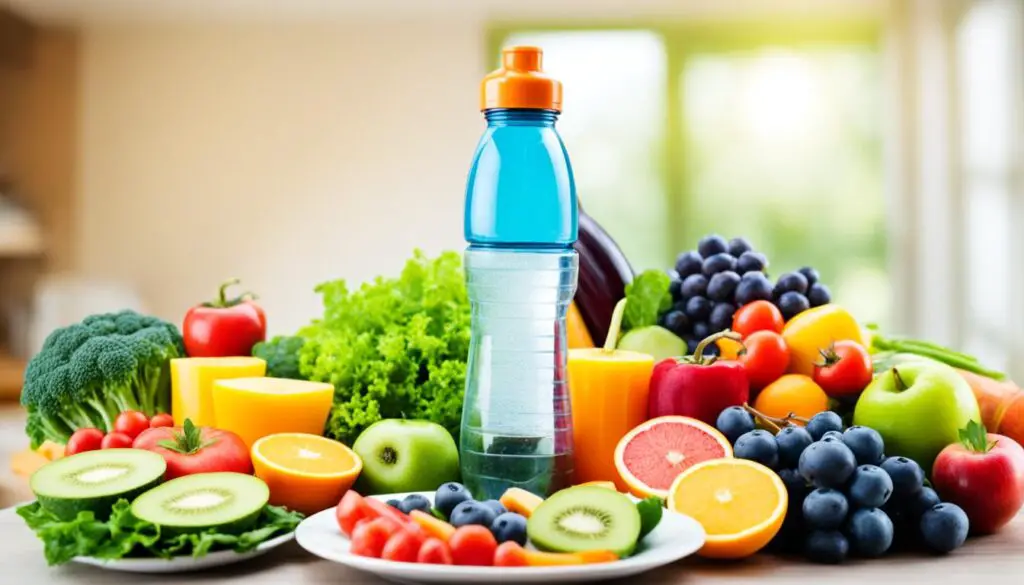
During Phase 3 of the HCG Diet Maintenance, the focus is on stabilizing your weight and transitioning into a sustainable, healthier lifestyle. This phase allows for more freedom in food choices, but it’s important to remain mindful of carbohydrate and sugar control to maintain your weight loss.
Freedom in Food Choices: In Phase 3, you have the flexibility to include a wider variety of foods in your diet. However, it’s essential to make conscious choices that align with your weight stabilization goals. Opt for nutrient-dense, whole foods that support your overall health and well-being.
Carbohydrate and Sugar Control: While you have more freedom in your food choices, it’s crucial to keep carbohydrate and sugar intake in check. This helps prevent potential weight gain and ensures that your body maintains a healthy balance. Focus on consuming complex carbohydrates and natural sugars found in fruits and vegetables while limiting processed and refined sugars.
Daily Weighing: Daily weighing is a vital practice during Phase 3. Monitoring your weight allows you to catch any potential signs of weight gain early on, enabling you to make necessary adjustments to your diet or exercise routine. It helps you stay accountable and maintain your desired weight.
Guidelines for Increased Calories: Gradually increasing your calorie intake is an essential aspect of Phase 3. Follow the recommended guidelines to reintroduce calories in a controlled manner. This gradual calorie increase helps your body adjust and transition smoothly from the low-calorie diet of the previous phases.
Exercise Reintroduction: Phase 3 is an appropriate time to reintroduce regular physical activity into your routine. Engaging in exercise not only supports weight maintenance but also promotes overall health and well-being. Start with moderate-intensity activities and gradually increase the duration and intensity as you feel comfortable.
By following these Phase 3 guidelines for HCG Diet Maintenance, you can stabilize your weight, maintain your weight loss, and enjoy the benefits of a healthier lifestyle.
| Phase 3 Guidelines for HCG Diet Maintenance |
|---|
| Ensure freedom in food choices |
| Maintain carbohydrate and sugar control |
| Weigh yourself daily |
| Follow guidelines for increased calories |
| Gradually reintroduce exercise |
Sample Menus for HCG Diet Maintenance Phase 3 (First 3 Weeks)
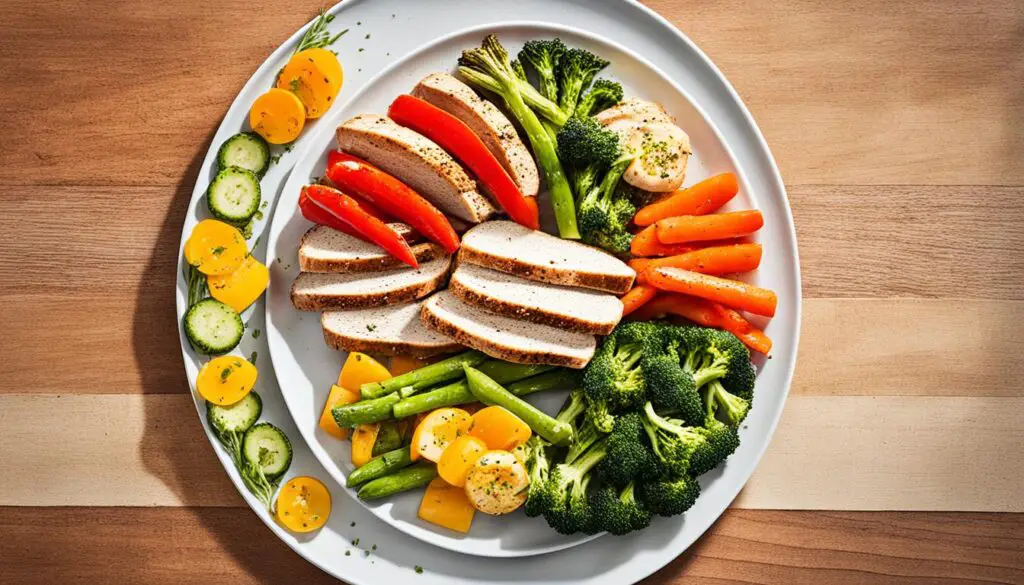
During Phase 3 of the HCG Diet Maintenance, having sample menus can provide you with ideas and inspiration for your meals. Here are some protein-rich breakfast options to start your day off right:
Protein-Rich Breakfast Options:
- Spinach and mushroom omelet
- Smoked salmon and cream cheese wrap
- Greek yogurt with berries and almonds
For snack ideas during the day, consider these options:
Snack Ideas:
- Hard-boiled eggs
- Protein smoothie with spinach and berries
- Turkey roll-ups with lettuce and mustard
When it comes to lunch and dinner, here are some suggestions that align with the guidelines of Phase 3:
Lunch and Dinner Suggestions:
- Grilled chicken breast with sautéed vegetables
- Shrimp stir-fry with broccoli and bell peppers
- Steak salad with mixed greens and avocado
If you have any dietary restrictions or preferences, feel free to make substitutions as needed. Just ensure that the substitutions align with the protein-rich and low-carb guidelines of Phase 3.
Lastly, if you have a sweet tooth, there are low-sugar dessert options that you can enjoy without compromising the guidelines of Phase 3:
Low-Sugar Dessert Options:
- Strawberries with whipped cream
- Dark chocolate dipped almonds
- Coconut milk chia pudding with berries
Remember, these sample menus are just a starting point. Feel free to get creative and experiment with different recipes and flavors that comply with the guidelines of Phase 3. By incorporating protein-rich options, snacks, and low-sugar desserts, you can enjoy a balanced and satisfying diet during this phase of the HCG Diet Maintenance.
Sample Menus for HCG Diet Maintenance Phase 3 (Last 3 Weeks)
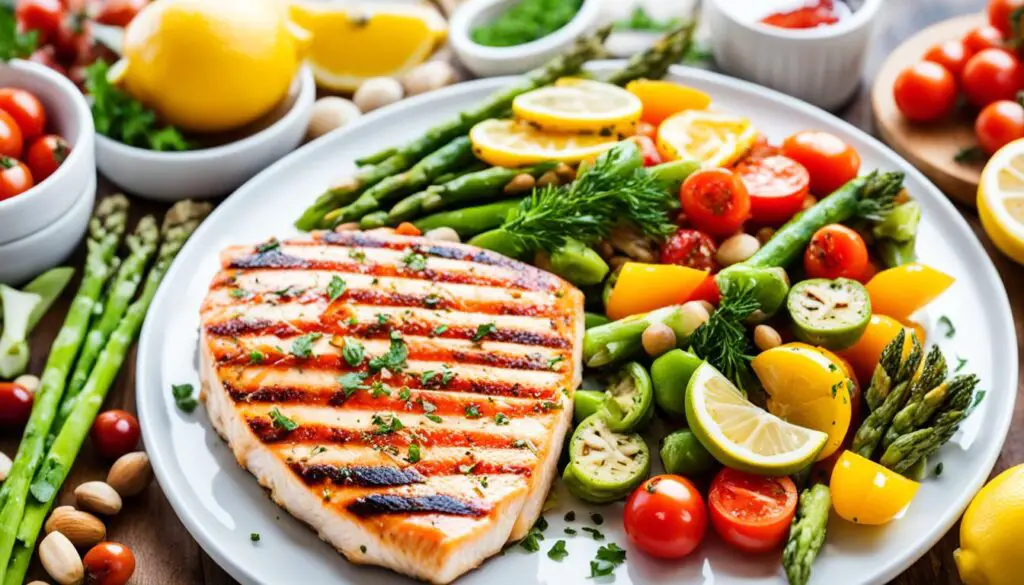
As you progress into the final three weeks of Phase 3 in the HCG Diet Maintenance, it’s time to gradually reintroduce sugars and starches into your diet while maintaining control over your sugar and carb intake. To help you navigate this phase and stay on track with your weight maintenance goals, here are some sample menus that provide breakfast, snack, lunch, and dinner ideas while considering portion sizes and sugar and carb control.
Breakfast:
- Spinach and mushroom omelet with a side of fresh berries
- Greek yogurt with sliced almonds and a sprinkle of cinnamon
- Quinoa breakfast bowl topped with mixed fruits and a drizzle of honey
Snack:
- Apple slices with almond butter
- Hard-boiled eggs
- Carrot sticks with hummus
Lunch:
- Grilled chicken salad with mixed greens, cherry tomatoes, cucumbers, and lemon vinaigrette
- Baked salmon with steamed asparagus and quinoa
- Vegetable stir-fry with tofu and brown rice
Dinner:
- Grass-fed beef burger wrapped in lettuce leaves with tomato and avocado
- Roasted chicken breast with roasted Brussels sprouts and sweet potato wedges
- Zucchini noodles with marinara sauce and grilled shrimp
Remember to prioritize portion control and listen to your body’s hunger and fullness cues throughout Phase 3. These sample menus can serve as a starting point for your meal planning, and you can customize them based on your preferences and dietary needs. It’s essential to maintain sugar and carb control to continue reaping the benefits of the HCG Diet Maintenance Phase while enjoying a varied and satisfying diet.
Conclusion
The HCG Diet Maintenance Phase is a vital component of successful weight maintenance and transitioning to a healthier lifestyle. By following the guidelines for Phase 3 and gradually reintroducing foods, you can confidently navigate this phase and sustain your weight loss. Daily weighing and monitoring for signs of weight gain are crucial for maintaining your progress.
It is essential to adhere to the recommended guidelines for protein, carbohydrates, and sugar intake during this phase. By doing so, you can effectively manage your diet and ensure long-term success. Embracing these guidelines will allow you to confidently maintain your weight loss and embrace a healthier lifestyle.
Transitioning to a healthier lifestyle goes beyond just the diet. It involves forming positive habits and incorporating regular physical activity into your routine. By embracing the principles learned during the HCG Diet Maintenance Phase, you can make lasting changes to support your overall well-being. Congratulations on completing the HCG Diet Maintenance Phase and taking the necessary steps towards a healthier you!
FAQ
What are the guidelines for Phase 3 of HCG Diet Maintenance?
Phase 3 of HCG Diet Maintenance requires avoiding carbohydrates for the first 3 weeks, increasing protein intake, gradually adding calories, and weighing yourself daily.
What foods should I include in Phase 3 of HCG Diet Maintenance?
Include protein-rich foods like lean meats and fish, fruits in moderation (especially berries and apples), nuts and seeds in moderation, dairy products in moderation (plain yogurt and low-fat cheese), vegetables, broth-based soups, fats and oils in moderation. You can also continue supplementation.
What foods should I avoid in Phase 3 of HCG Diet Maintenance?
Avoid carbohydrates such as sugar, bread, rice, potatoes, and pastries. Cereal and grissini bread sticks are also not allowed. Check condiments for excessive sugar content. Jams, jellies, and sweet pickles should also be avoided.
What tips can help me maintain my weight loss during Phase 3 of HCG Diet Maintenance?
Weigh yourself daily and stay within 2 lbs of your last injection weight. If you notice weight gain, implement a steak day. Focus on maintaining a high protein intake, be mindful of carb and sugar limits, check condiments, consider homemade alternatives for sauces and dressings, continue taking recommended supplements, engage in physical activity, and seek support if needed.
What is Phase 1 of HCG Diet Maintenance?
Phase 1, known as gorging/loading, involves consuming as much fatty and oily foods as possible to avoid extreme hunger pains in the first week.
What is Phase 2 of HCG Diet Maintenance?
Phase 2, the fat burn phase, lasts for 21 days and involves following a 500 calorie diet, using the Nasal Spray, and selecting specific protein, fruit, vegetable, and starch options.
How can I break through weight loss plateaus during Phase 2 of HCG Diet Maintenance?
Increase water intake, adjust protein intake, incorporate an apple day, check condiments for hidden sugars, eliminate breadsticks, evaluate protein sources, consider medications, adjust food intake, incorporate exercise, ensure sufficient sleep, and try adding apple cider vinegar to your daily regimen.
What are the guidelines for Phase 3 of HCG Diet Maintenance?
Phase 3 focuses on stabilizing weight. There is more freedom in food choices, but carbohydrate and sugar consumption should still be controlled. Daily weighing, gradual calorie increase, and reintroducing exercise are important.
Sample menus for Phase 3 provide ideas for protein-rich breakfast options, snacks, and lunch and dinner suggestions. They also include low-sugar dessert options to satisfy cravings within the guidelines.
Sample menus help guide the gradual reintroduction of sugars and starches into your diet during the last 3 weeks of Phase 3. They provide breakfast, snack, lunch, and dinner ideas, emphasizing portion control and maintaining sugar and carb control.
Why is the HCG Diet Maintenance Phase important?
The HCG Diet Maintenance Phase is crucial for transitioning to a healthier lifestyle and sustaining weight loss. By following the guidelines and gradually reintroducing foods, you can confidently maintain your weight loss and embrace a healthier lifestyle.



